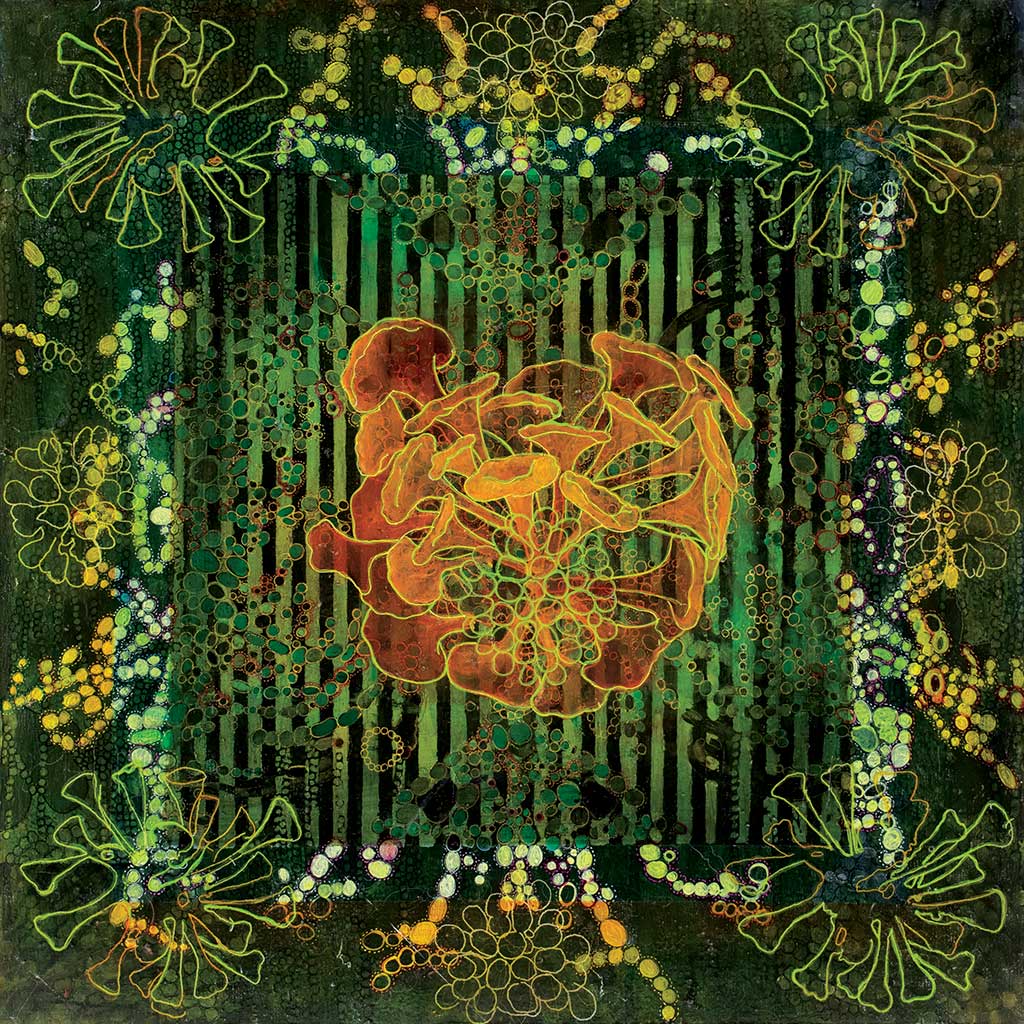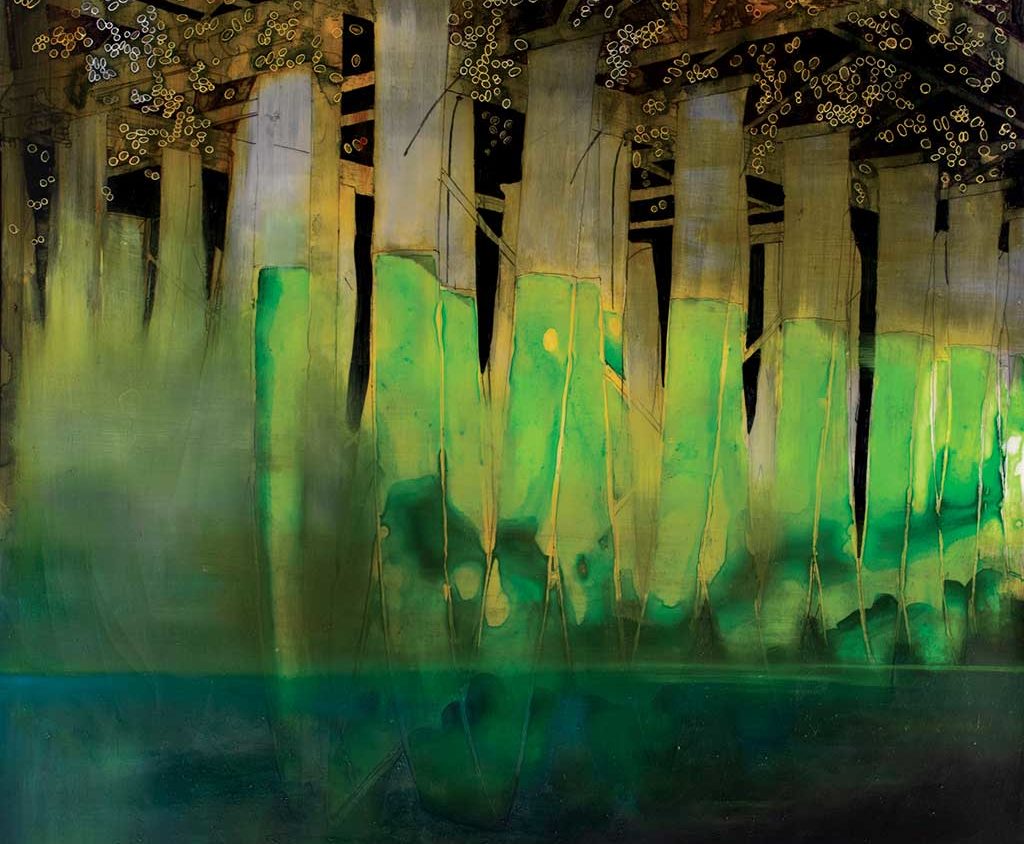Did you know that algae and cyanobacteria are part of every breath we take? Me neither, but that’s what Laura Ahola-Young says in her artist statement for Weather Permitting. The exhibit of her drawings and paintings, at Maude Kerns Art Center through March 25, takes a deep dive into the mind and practice of an artist who’s been wholly impressed with the way plants grow, and with the effect they have on our existence.
A significant number of the paintings in the exhibit are dark and green — like algae.
“I was, and still am, engaged in conversations with algae scientists while I endeavored to create these works,” Ahola-Young explains.
She is associate professor of art at Idaho State University in Pocatello, but in another life she could have been a scientific illustrator. Her paintings and drawings include an illustrative exactness alongside the more painterly and nondescript forms.
Besides being taken with algae, Ahola-Young is fascinated by the reproduction of cells, how plant and animal cells differ and the “magic of photosynthesis.” These varied interests come across in her drawings and paintings, not in a linear fashion but in a layered and decorative style. Subject matter is often covered or obscured by small round or oblong shapes, which Bob Walters, a local writer checking out the exhibit, referred to as “organelles” — specialized structures found inside a cell.
The drawings in the show, like “Oxygen #2” (graphite, ink and gouache on paper and board), are standouts as works on their own. But some appear to be studies for paintings, as with the drawing and painting that are both titled “Neptune’s Necklace.” Both Neptunes are intense and symmetrically designed.
“How does symmetry unfold through cellular systems?” the artist asks in her statement. The question reveals that design as well as subject matter may be informed by her interest in cells.
Enlarge

Walters says he hasn’t read the artist’s statement. He prefers to wait until after he’s seen the art. He then says one of the larger paintings, “Cyanobacteria,” reminds him of a Persian rug. The painting has the rectangular shape of a rug, with a border around it, and is symmetrically designed.
I learned how cells divide by taking physical anthropology in college. I remember being intrigued by the star-shaped looking thing — the aster — that seemed to lead the whole process. I wondered, how did it know how to do that?
And seeing Ahola-Young’s artwork, I wonder about the process that led her to create these images. Much of the art is uniformly designed, like a Persian rug or a cell. I don’t pretend to understand what it all means, but I’m quite sure all the colors, shapes and design fit into a meaningful and personal symbolic language.
If you really like an artist’s work then you’ll want to learn their language. After the show I look up some of the titles of her artworks. A “chloroplast” is a green plant cell in which photosynthesis takes place. It’s a dictionary definition but it adds to my appreciation of the subject matter.
Weather Permitting runs at Maude Kerns Art Center, 1910 E. 15th Avenue, through March 25. A reception will be held 6 pm Friday, March 11. Hours are 10 am to 5:30 pm Tuesday to Friday and noon to 4 pm Saturday. Masks required.
